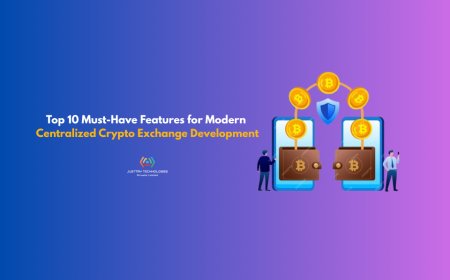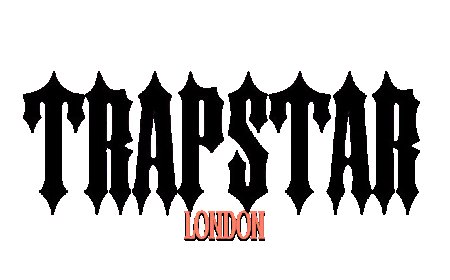How to Spend Management Software Is Revolutionizing Hospital Procurement

Hospital procurement is no longer just about buying necessary goods and services. It's about doing more with less and without compromising care, compliance, or uniformity. This is precisely what spend management software is doing: transforming how hospitals make purchasing decisions, work with vendors, and manage costs.
This is no story about technology. One that lets hospitals break the chains of decades of disconnected processes, data silos, and hidden inefficiencies, especially in an industry where gaining even 1% in margins means millions of dollars saved.
Let's cut through how this change is truly going on.
The Procurement Problem Most People Don't Talk About
Suppose you've worked in or around hospital operations. In that case, you've probably seen this: multiple departments managing their contracts, purchasing the same services from different vendors, often with varying terms and prices. One department might be paying 30% more for medical waste disposal than the one across the hall, and not even know it.
Why? Because data spending in hospitals is notoriously fragmented. Most of it lives in spreadsheets, ERP systems, or inside the heads of department managers. While clinical procurement (like medical supplies or equipment) tends to be more centralized and well-documented, purchased serviceslike laundry, food, IT, and facilitiesare different.
These categories are harder to track. They're contract-heavy, people-driven, and rarely standardized. That makes them ripe for inefficiencyand the perfect target for spend management innovation.
What Is Spend Management Software (And What Makes It Different)?
Spend management software is not an expense tracker. It is a decision-making tool, in essence. It allows hospitals to visualize their complete buying picturewhat they're purchasing, whom they're purchasing from, how much they're spending, and where saving or streamlining opportunities are available.
But what's new today is how smart and actionable these tools have become.
Modern spend management platforms now:
- Clean and categorize AP data automatically
- Provide real-time benchmarking against industry peers
- Surface savings opportunities without manual audits
- Help hospitals source better contracts through digital RFPs
- Track vendor performance and diversity metrics
- Offer insights in plain language
The goal? To help procurement leaders go from reactive to proactive. From managing invoices to managing strategy.
Why Hospitals Are Paying Attention Now
So why is this shift happening now?
For starters, hospitals are under immense financial pressure. Labor costs are soaring. Reimbursements are unpredictable. And margins are thinner than ever. Purchased servicesonce considered fixed or "set-it-and-forget-it" categoriesare suddenly being scrutinized for good reason.
These services now account for more than non-labor hospital spending. That's a huge bucket with significant variability, and spend management software is finally giving hospitals the visibility they need to address it.
Another reason? The pandemic highlighted just how fragile and disconnected many supply chains are. Leaders saw firsthand how manual, outdated procurement processes left them scrambling. They realized the old ways weren't just inefficientthey were risky.
With clearer mandates to cut costs, improve transparency, and build more resilient vendor networks, the appetite for smarter tools has grown. Spend management isn't a "nice to have" anymore. It's infrastructure.
What the Real Change Looks Like On the Ground
Here's what happens when a hospital truly embraces spend management software:
1. Visibility Comes First
The initial major victory is transparency. Financial and procurement staff can view their complete spending picture across all departments, suppliers, and service lines. They can identify where prices fluctuate wildly, where contracts are reaching their expiration dates, and where several suppliers perform similar tasks.
For instance, a hospital may have six elevator maintenance vendors with varying rates and response levels across its network. That's not only inefficientit's dangerous. With visibility, vendor consolidation is a no-brainer.
2. Benchmarking Becomes Possible
Good spending tools don't just show you your datathey compare it to industry norms. That means a procurement manager can now see, with evidence, whether they're overpaying for outsourced transcription services or if their current landscaping contract is 20% above market average.
That context is incredibly powerful in negotiations. It also builds credibility with finance teams and executives when you ask for changes or bring new vendors to the table.
3. Digital RFPs Simplify Sourcing
Initiating and administering RFPs (proposal requests) has been cumbersome and time-consuming. However, with spend management platforms that have eRFP functionality, hospitals can now conduct sourcing events electronically, at scale, and faster.
They can even pool demand between departments or sister plantsproviding them with negotiating power they never had. The outcome is improved pricing, service terms, and quality across the board.
4. Diversity and Local Spend Tracking Gets Real
Increasingly, hospitals are establishing supplier diversity and local buying goals. However, the absence of good data means that these objectives are merely aspirational. Spend software enables hospitals to label vendors by category (minority-owned, woman-owned, local, etc.) and monitor their performance over time.
It matters greatlyparticularly when boards and public stakeholders demand evidence that procurement demonstrates community values.
5. Savings Are Tracked and Sustained
This may be the most underappreciated shift: accountability.
After a cost-saving contract is signed, the work's not over. Spend platforms assist hospitals in keeping tabs on whether savings are realizedand alerting if price creep occurs or scope creep develops. That kind of governance keeps everyone in line and makes sure savings persist.
It's Not Just About SoftwareIt's About Mindset
All this being said, the software is only as effective as the strategy that informs it.
- The hospitals that experience the greatest gains are the ones that:
- Centralize management of bought services (instead of allowing each department to go it alone)
- Invest in clean data as a building block
- Get clinical, financial, and operating leaders in the same room
Use procurement as a strategic lever, not just a back-office function
This mental adjustment is not simple. However, it is what differentiates companies that just install software from companies that change their spending culture.
The Road Ahead: Smarter Spend, Better Care
Every dollar saved from improved procurement is a dollar that can be reinvested in carenursing staff, equipment upgrades, and enhanced patient environments.
That's why this movement is important.
Spend management software is not flashy. It will not appear in slick hospital pamphlets. But it is quietly working behind the scenesmaking better decisions, cutting waste, and constructing more robust organizations from the ground up.
And in a world where margins matter, that influence is not just operationalit's transformational. Contact Valify now!





































